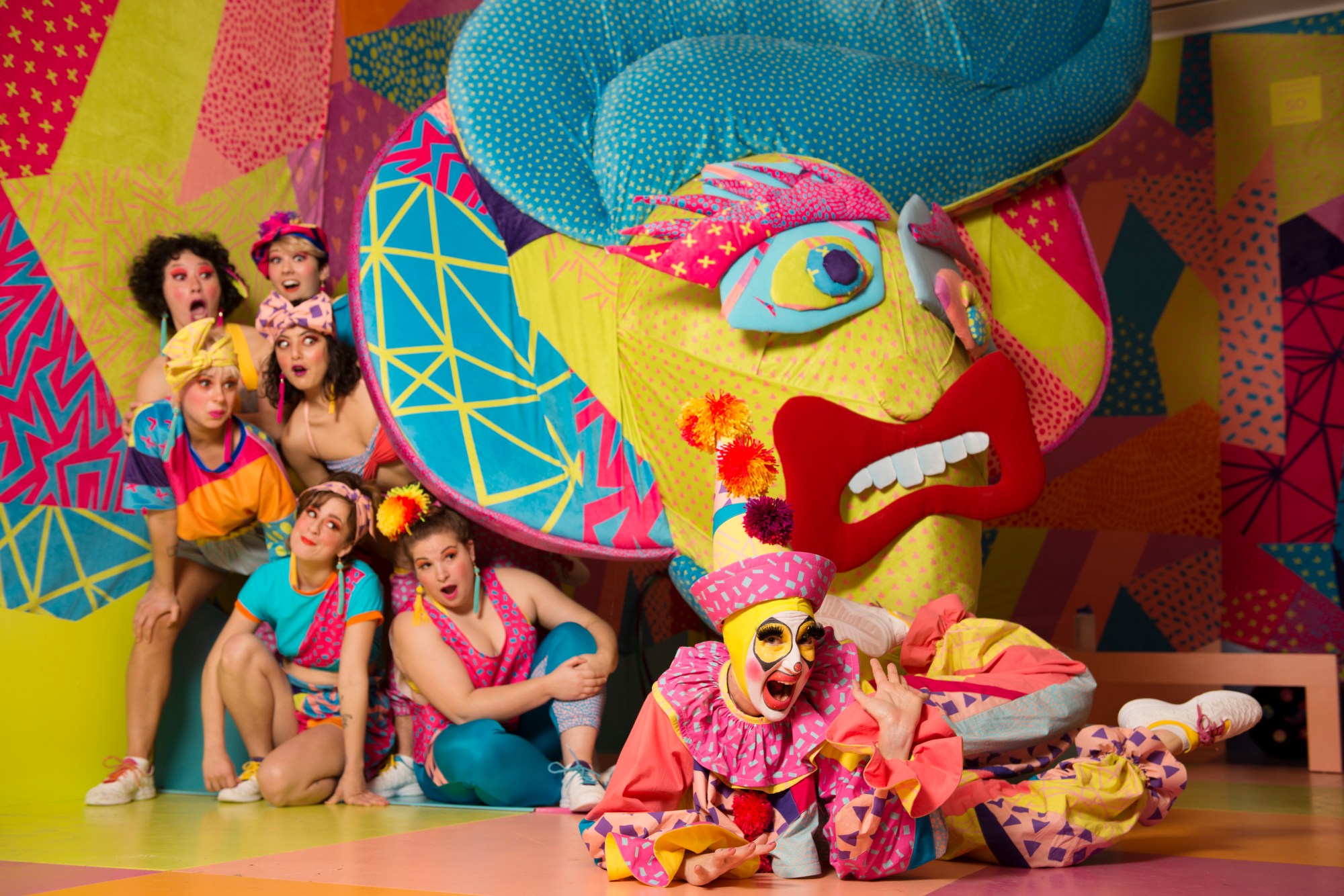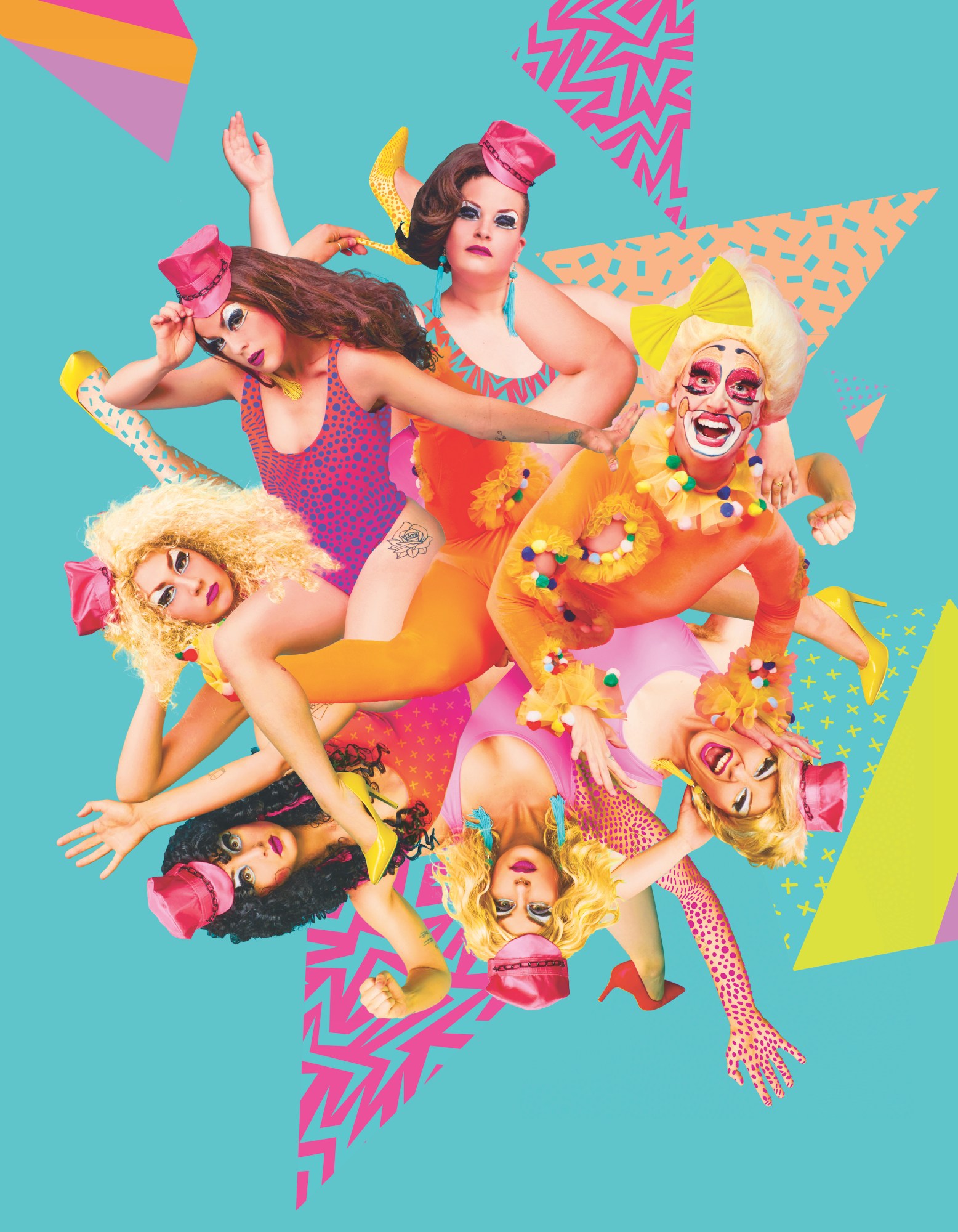Combining contemporary dance, drag, clowning, and feminist and queer performance art, Jody Kuehner blurs the lines between what are traditionally considered divergent mediums. Operating under a persona and alter ego named Cherdonna Shinatra — a character she likes to call “aggressively sweet” and whose name was inspired by both Madonna and Cher — the Seattle-based artist uses her multidisciplinary work to question social and cultural norms across gender and sexuality.
Recently bringing her radical practice to the Frye Art Museum in Seattle, Washington, her new work, titled DITCH, takes the form of a colorful and immersive installation space that includes daily performances by Cherdonna and her recently formed queer dance company, DONNA. According to the museum’s website, “DITCH shines a light on Cherdonna’s varied expressions of femininity and complex personality, contrasting her charisma and constant need to please with the total fear and existential dread that ceaselessly plagues her.” As such, the multimedia work attempts to answer the question: “What happens when she can’t make everyone happy in the face of an oppressive existence?”
i-D spoke with Kuehner about how she is challenging the static structures of traditional museum spaces with her performances and what her alter ego represents.
Where did your interest in dance come from?
It’s almost like I popped out of the womb ready to dance. I’ve just always wanted to be a dancer. It really is the only thing I remember wanting to do or be. I’ve been lucky in that way and I’ve never deviated from the path. I just love it and all the different shapes it can take. You know how we have different love languages or types of intelligence? I think my gift as a human in this world is my body. For a long time, I really just wanted to be a modern dancer and then fell in love with costuming and sets and the ability to change the world and what people walk into when they’re about to view something.

How does your work blur the boundaries of different mediums?
I draw from so many different forms. I make dances working in persona and performance art with elements of theater. It has been delightful to be at the Frye and in a museum setting because for the past 10 years I was operating in contemporary dance venues. There’s been a lot of pushback as to whether I’m doing dance because everything I make is highly choreographed. Now I work in identity and dance and body and queerness, of course drag culture is just there. And just in the last couple of years I’ve branched out to being in museums with this work.
What does your persona, Cherdonna Shinatra, represent?
Maybe she’s a million years old or maybe she’s two years old. She exists on a different plane. She’s not really based in reality. I like to call her aggressively sweet and there’s a real child-like nature to her. I think in that way she’s a reflection of humanity. One of the rules I have for her is that she shows all of her emotions all of the time, which pushes against the social structures of how we’ve been taught to behave. I think that’s what people connect with most. There’s real joy in seeing her move through a myriad of emotions during a 50 minute performance. This character has allowed me to dive into so many different areas that I’ve wanted to explore as an artist.

How did you decide to launch DONNA?
So, DONNA just started really in the last two or three years. It really was a very organic process. I didn’t really set out to have a company because I’ve been doing solo work for a pretty long time. In the development of my work, I wanted to bring in some other folks to interact with what I was doing. And I found this ensemble of local dancers here who are just an amazing group of people who are willing to just go there and experiment and they’re so fearless, open, and thoughtful. It’s been really exciting and they’ve totally challenged me and they’re all queer.
How do you attempt to “make every person happy” through this exhibit?
It’s a failed attempt from the beginning and that’s part of what the work of this and why it’s called Ditch. There isn’t a linear story to this body of work. I feel like it has more of a collage effect. I’ve had feedback in the past of people being like, “Is the work happy? Sad? I’m not sure.” And I’m like, “Exactly.” I don’t know either if this is happy or sad. I’m really confused by it. Existing on that tipping line is interesting to me. And I hope audiences will walk away thinking, “Wow, I really laughed hard and then all of a sudden I felt really sad.” I’m interested in what that can bring up for people.
In what ways does this piece also attempt to speak to the femme experience?
I try to center the femme person in my work, especially when in institutions. Our world is based in the patriarchy. In my last few works, I’ve had this femme representation. In this piece, we have a large sculptural piece that we call “MomDonna.” I really see her as this giant ruin or this big matriarchal figure who is sort of like an oracle and she’s not totally put together. She’s been around for thousands of years and she’s basically seeing humanity struggle with the same issues. And as one generation dies, the next one comes up and is still struggling and trying. And so, I think she’s in the space as sort of a representation of these cycles in our history.

